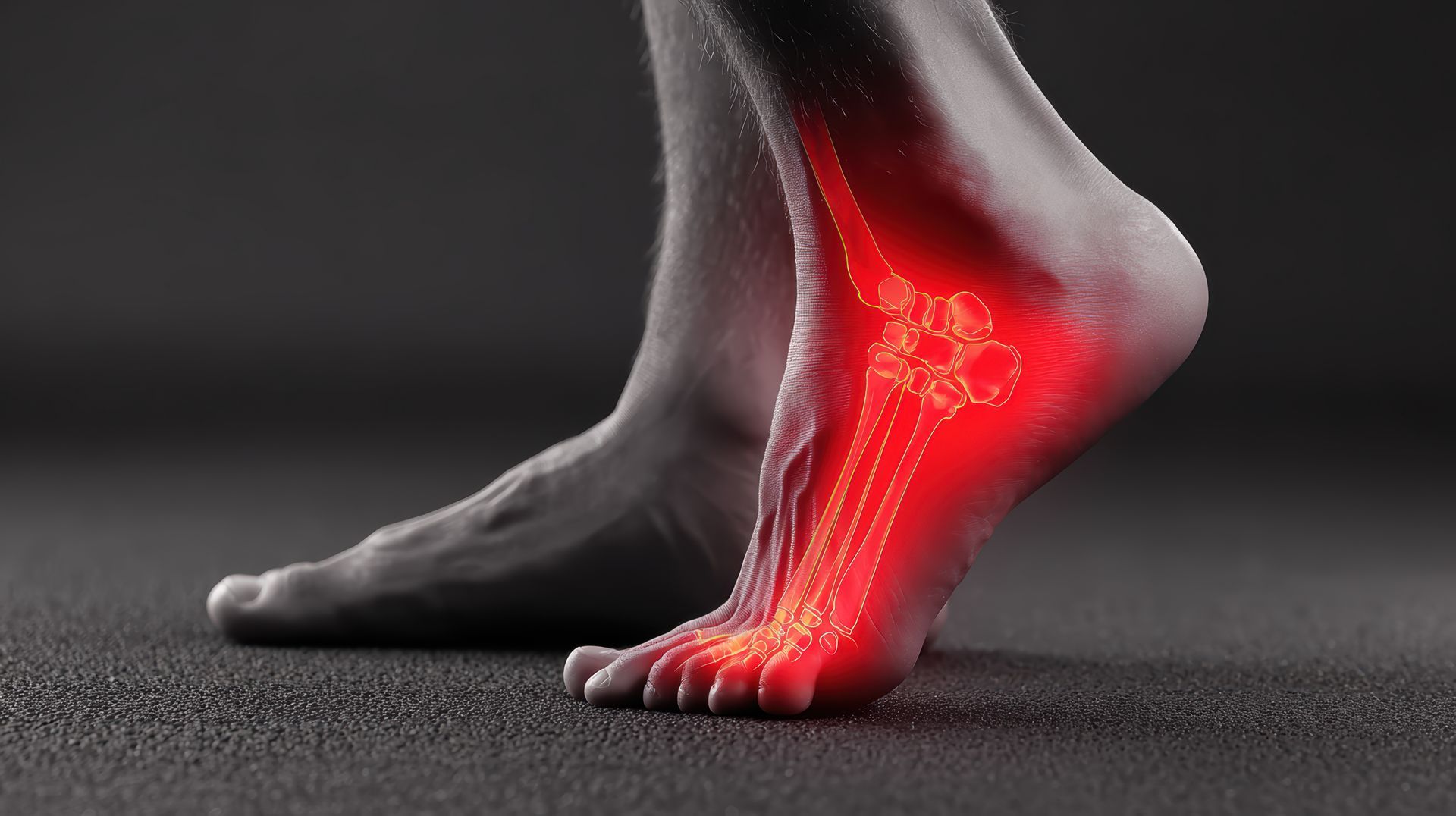Managing Chronic Pain Without Medication
Chronic pain affects millions of individuals across the United States, presenting a challenge that extends beyond physical discomfort to impact emotional and mental well-being. Defined as pain persisting for over 12 weeks, it often stems from conditions like arthritis, neuropathy, or previous injuries. While medications are a common resource, they bring potential side effects and the risk of dependency. Thus, exploring alternative pain management strategies is crucial for those seeking sustainable relief.
Understanding Chronic Pain
Chronic pain is a prolonged condition that continues well beyond the expected healing period, lasting for months or even years. In the United States, it affects approximately 50 million adults, significantly disrupting their daily activities and overall quality of life. Common causes include arthritis, which results in joint inflammation, and neuropathy, a condition arising from nerve damage. Other causes can be more elusive, sometimes linked to past injuries or illnesses.
Medications, while offering temporary relief, may not address the root causes of pain. Prolonged use of painkillers can lead to dependency and other health complications, prompting many to seek alternative methods for pain management. A comprehensive understanding of chronic pain is essential to identify effective, non-pharmaceutical strategies that target both the physical and emotional aspects of pain.
The Role of Mental Health in Chronic Pain
Mental health significantly influences the experience of chronic pain. Research indicates that mental health conditions such as depression and anxiety can amplify the perception of pain, creating a challenging cycle to break. Addressing mental health is therefore a crucial component of pain management. Integrating mental health care into pain management plans
can lead to improvements in both physical and emotional well-being.
A holistic approach that considers both physical and mental health aspects can lead to more effective pain management. This includes therapies targeting emotional well-being, such as mindfulness and meditation, which can reduce stress and improve pain perception.
Mindfulness and Meditation Techniques
Mindfulness, a practice rooted in meditation, involves focusing on the present moment and accepting it without judgment. This technique can be particularly beneficial for managing chronic pain, as it helps individuals alter their perception of pain and reduce stress. Various meditation practices, such as guided imagery and body scan meditation, can aid in pain reduction and enhance mental well-being.
Research has shown that mindfulness can be effective in managing chronic pain. Studies demonstrate significant improvements in pain management and quality of life among participants who practice mindfulness regularly. To incorporate mindfulness into daily routines, individuals can start with short meditation sessions, gradually increasing the duration as they become more comfortable with the practice.
Trigger Point Injections as a Pain Management Tool
Trigger Point Injections (TPIs) are a pain management technique that alleviates chronic muscle pain by applying a small amount of anesthetic or saline to specific points on the body to relieve pain. It is believed to stimulate the body's natural painkillers and improve energy flow,
offering relief for various chronic pain conditions.
Benefits include providing targeted pain relief, reduction of inflammation, improved range of motion, and a quick, in-office procedure with minimal downtime. In Richmond, VA, individuals can find local practitioners offering Trigger Point Injection (TPI) services, providing an accessible option for those seeking alternative pain management techniques.
Biofeedback for Pain Management
Biofeedback is a technique that helps individuals gain control over physiological functions, such as heart rate and muscle tension, to manage pain. During a biofeedback session, sensors are attached to the body to monitor these functions, allowing patients to learn how to regulate them through relaxation techniques.
Biofeedback can effectively address various types of chronic pain, including tension headaches and fibromyalgia. Facilities in Richmond, such as those specializing in holistic care, offer biofeedback therapy as part of their pain management programs.
Physical Therapy and Exercise
Physical therapy plays a crucial role in managing chronic pain by strengthening muscles and improving mobility. Personalized exercise plans tailored to specific pain conditions can lead to significant improvements in pain and function. For example, gentle stretching and strengthening exercises can benefit those with lower back pain, while aquatic therapy can be helpful for individuals with joint pain.
In Richmond, VA, several physical therapy centers specialize in chronic pain management, providing professional guidance to ensure safe and effective exercise routines.
Community Support and Resources in Richmond
Support from peers and community resources can be invaluable for individuals managing chronic pain. Local support groups offer a platform for sharing experiences and strategies, fostering motivation and accountability. In Richmond, organizations host events focusing on natural pain management techniques, providing opportunities for individuals to connect and learn from one another.
Embracing a Holistic Lifestyle for Long-Term Relief
Adopting a holistic lifestyle can significantly impact chronic pain management. This includes maintaining a balanced diet, ensuring adequate sleep, and practicing stress management techniques. Practical tips for making these lifestyle changes include setting regular sleep schedules, incorporating anti-inflammatory foods into meals, and engaging in activities that promote relaxation, such as yoga or tai chi.
By exploring various techniques and finding what works best for their unique situation, individuals can achieve improved quality of life through non-medication approaches. Emphasizing a comprehensive approach to chronic pain management can lead to long-term relief and enhanced well-being.
Dietary Considerations for Pain Management
Nutrition plays a pivotal role in managing chronic pain. A diet rich in anti-inflammatory foods, such as fruits, vegetables, and omega-3 fatty acids, can help reduce inflammation and pain. Conversely, processed foods and those high in sugar and trans fats can exacerbate inflammation and contribute to pain.
Individuals can benefit from consulting with a nutritionist to develop a dietary plan tailored to their specific needs. By making informed dietary choices, individuals can support their body's natural ability to manage pain and improve overall health.
The Importance of Sleep in Pain Management
Quality sleep is essential for effective pain management, as
it allows the body to repair and regenerate. Chronic pain often disrupts sleep, leading to a cycle of increased pain and fatigue. Establishing a regular sleep routine and creating a restful environment can promote better sleep quality.
Techniques such as maintaining a consistent sleep schedule, reducing screen time before bed, and creating a calming bedtime routine can improve sleep quality. By prioritizing sleep, individuals can enhance their body's ability to manage pain and improve overall well-being.
Yoga and Tai Chi for Pain Relief
Yoga and Tai Chi are gentle forms of exercise that combine physical movement with mindfulness and deep breathing. These practices can improve flexibility, strength, and balance, making them beneficial for individuals with chronic pain. Regular practice can also reduce stress and improve mental well-being.
Incorporating yoga or Tai Chi into a daily routine can provide both physical and emotional benefits. Local classes and online resources can help individuals get started and develop a practice that suits their needs.
Vitamin IV Drip Therapy for Pain Relief
By delivering a customized blend of vitamins, minerals, and antioxidants directly to the bloodstream, Vitamin IV Drip Therapy can be an effective way to relive pain quickly, ensuring maximum effectiveness and relief from pain and inflammation.
Nutrients and vitamins play a critical role in reducing inflammation, promoting cellular repair and supporting nerve and muscle function. IV Therapy in Richmond, VA can help alleviate chronic pain, including: Migraine Relief, Muscle Recovery, Neuropathy Support, and more.
Managing chronic pain without medication involves a multifaceted approach that considers both physical and mental health. By exploring techniques such as mindfulness, trigger point injections, biofeedback, physical therapy, and lifestyle changes, individuals can find sustainable relief and improve their quality of life. Embracing a holistic approach empowers individuals to take control of their pain management journey, leading to long-term well-being.
For more information or to discuss pain management options,
contact Chronic Care of Richmond today. Our team is dedicated to providing personalized, compassionate care to help you manage chronic pain effectively.




